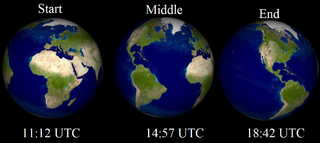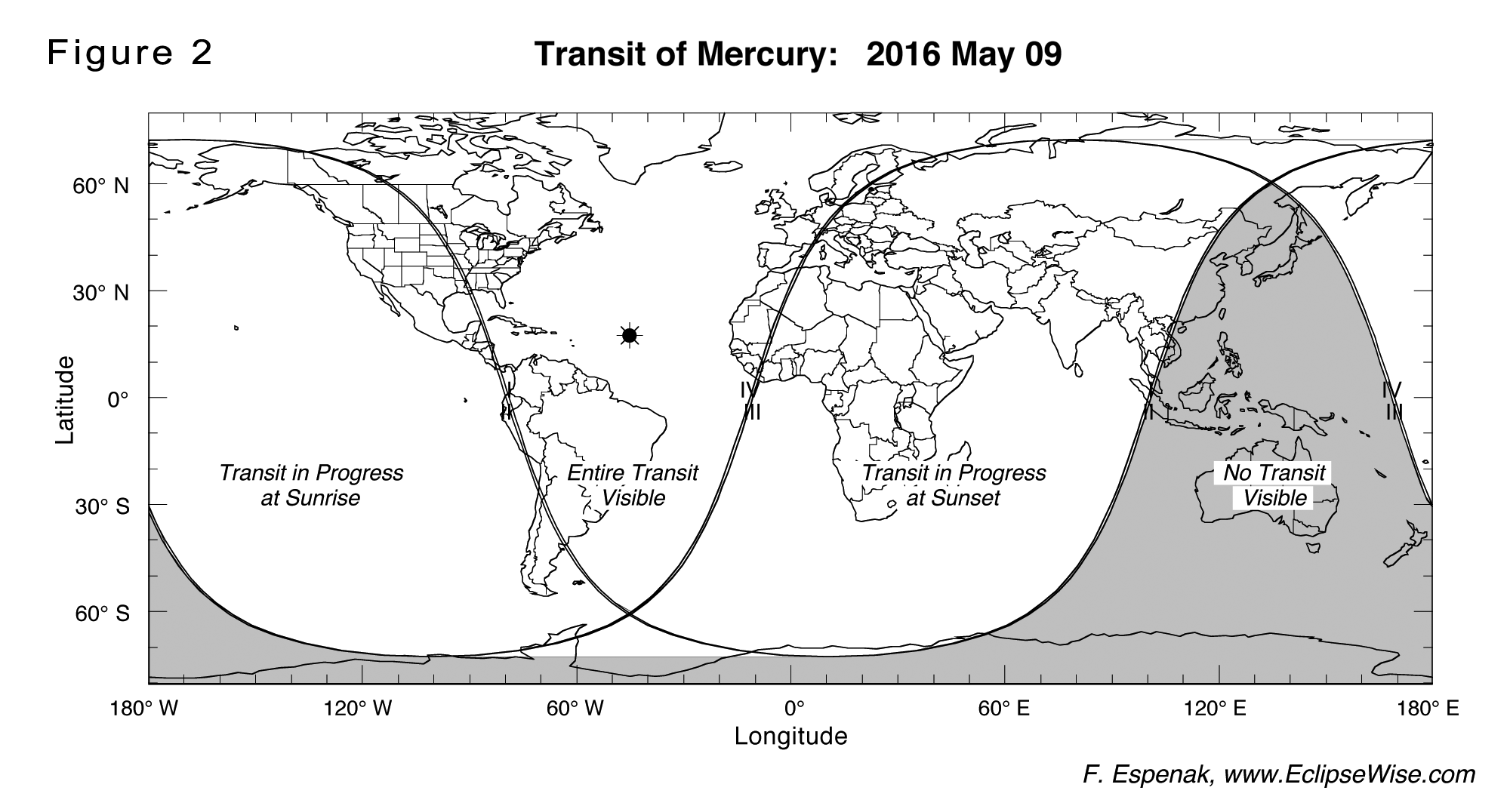Rare Celestial Events Trending
Transit of Planets Trend May 2016
Its exciting and its happening this May 9, 2016. A huge event occurring every so often a century. In 2012 Transit of Venus across the Sun now its the Transit of Mercury such a special event will occur May 9, 2016.
During the 2012 Transit of Venus passing across the Sun, the phenomena :
..takes place when the planet Venus passes directly between the Sun and a superior planet, becoming visible against (and hence obscuring a small portion of) the solar disk. During a transit, Venus can be seen from Earth as a small black disk moving across the face of the Sun. The duration of such transits is usually measured in hours (the transit of 2012 lasted 6 hours and 40 minutes). A transit is similar to a solar eclipse by the Moon. While the diameter of Venus is more than 3 times that of the Moon, Venus appears smaller, and travels more slowly across the face of the Sun, because it is much farther away from Earth. Transits of Venus are among the rarest of predictable astronomical phenomena.They occur in a pattern that generally repeats every 243 years, with pairs of transits eight years apart separated by long gaps of 121.5 years and 105.5 years. The periodicity is a reflection of the fact that the orbital periods of Earth and Venus are close to 8:13 and 243:395 commensurable.[1]
During the 2012 Transit of Venus passing across the Sun, the phenomena :
..takes place when the planet Venus passes directly between the Sun and a superior planet, becoming visible against (and hence obscuring a small portion of) the solar disk. During a transit, Venus can be seen from Earth as a small black disk moving across the face of the Sun. The duration of such transits is usually measured in hours (the transit of 2012 lasted 6 hours and 40 minutes). A transit is similar to a solar eclipse by the Moon. While the diameter of Venus is more than 3 times that of the Moon, Venus appears smaller, and travels more slowly across the face of the Sun, because it is much farther away from Earth. Transits of Venus are among the rarest of predictable astronomical phenomena.They occur in a pattern that generally repeats every 243 years, with pairs of transits eight years apart separated by long gaps of 121.5 years and 105.5 years. The periodicity is a reflection of the fact that the orbital periods of Earth and Venus are close to 8:13 and 243:395 commensurable.[1]
Extremely Rare Celestial Event May 9, 2016
Transit of Mercury Across the Sun
Transit of Mercury Across the Sun
During the 2016, Transit of Mercury across the Sun, we will be able to see Mercury as a small black lot. The entire transit is seen on May 9, 2016 starting at 11:12 UTC and Ending 18:42 UTC entire transit in S. America, eastern N. America, western Europe; partial transit everywhere else except Australia and far eastern Asia.

May or November are the months the Transits of Mercury are seen in 2016. Keep an eye on the date of May 8, 2016:
They currently occur within a few days either side of May 8 and November 10.The interval between one November transit and the next November transit may be 7, 13, or 33 years; the interval between one May transit and the next May transit may be 13 or 33 years. May transits are less frequent than November transits because during a May transit, Mercury is near aphelion whereas during a November transit, it is near perihelion. Perihelion transits occur more frequently due to two effects: firstly, Mercury moves faster in its orbit at perihelion and can reach the transit node more quickly, and secondly at perihelion Mercury is closer to the Sun and so has less parallax.
[2]
Read More:
[2] https://en.wikipedia.org/wiki/Transit_of_Venus
[2]https://en.wikipedia.org/wiki/Transit_of_Mercury
[3]http://www.venus-transit.de/Mercury2016/index.html

